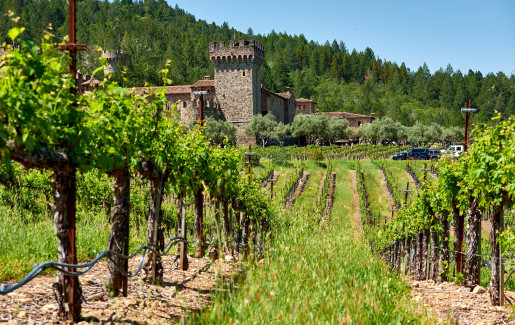Napa Valley's Famed Winery Damaged in Glass Fire
Castello di Amorosa turns to experienced public adjusters after its production facility was destroyed by wildfire.
... After many months of negotiating and adjusting our loss on our own, we made the decision to retain The Greenspan Co./Adjusters International. Steve Severaid, Tim Larsen, and Chris Glenister took over our claim and their expertise and professionalism made a difference of over $1,200,000.00. Their collective lens saw things that we did not see. The whole process really opened our eyes and reminded of us of the old adage of ‘You don’t know what you don’t know.’ If we ever have a claim again, we will definitely hire The Greenspan Co./Adjusters International. Thanks again.
Description
When the production facility of the beloved Napa winery, Castello di Amorosa, was destroyed in a firestorm, its highly experienced business operations team worked to compile, submit, and negotiate the property damage insurance claim. After nearly a year, owner Dario Sattui — sensing that his team had done all they could do — consulted with the team at The Greenspan Co./Adjusters International, ultimately deciding to engage The Greenspan Co./Adjusters International's services. This savvy decision resulted in $1.2 million over the insurance company's original offer to the winery.
Issues
As a result of handling dozens of winery claims caused by wildfires in the region, The Greenspan Co./Adjusters International team knew exactly where to look for possible deficiencies in the insurance carrier’s proposed settlement. Following its forensic review, the team identified the proposal’s flaws:
- The insurance carrier had ignored inventory, which represented approximately 7,547 bottles of wine (equal to 7% of the claim), saying that this was not inventory owned by the insured. Although this inventory was excluded from the carrier’s inventory calculations, they included the stock for the purposes of calculating a lower average selling price per case.
- The carrier had based the inventory loss on a theoretical number—an annual perpetual inventory that counted what was supposed to have been sold or used, based on the numbers from the prior year.
- Decreases to unincurred expenses – carrier had made base assumptions, offsetting revenue with expenses.
Solutions Applied
The Greenspan Co./Adjusters International successfully argued that the insurance policy treats the wine inventory as insurable if it is in the “care, custody & control” of the insured at the time of the loss. Additionally, The Greenspan Co./Adjusters International added back the goods sold but not delivered revenue, increasing the average selling price per case.
The forensic accounting team at The Greenspan Co./Adjusters International argued for a different inventory number — one based on the annual physical inventory. Going back three years, they compiled data that showed the difference between the perpetual inventory and the physical inventory (+) purchases (-) sales until the date of loss, ultimately prevailing and increasing the loss of inventory claim by $565,000.
The Greenspan Co./Adjusters International team successfully argued that some of the unincurred expenses did not relate to bottled wine. Some of them included gift revenue expense, tours and tastings, hospitality passthrough expense, and sales excise tax — all of which were removed from the calculations, increasing the revised claimed amount.


